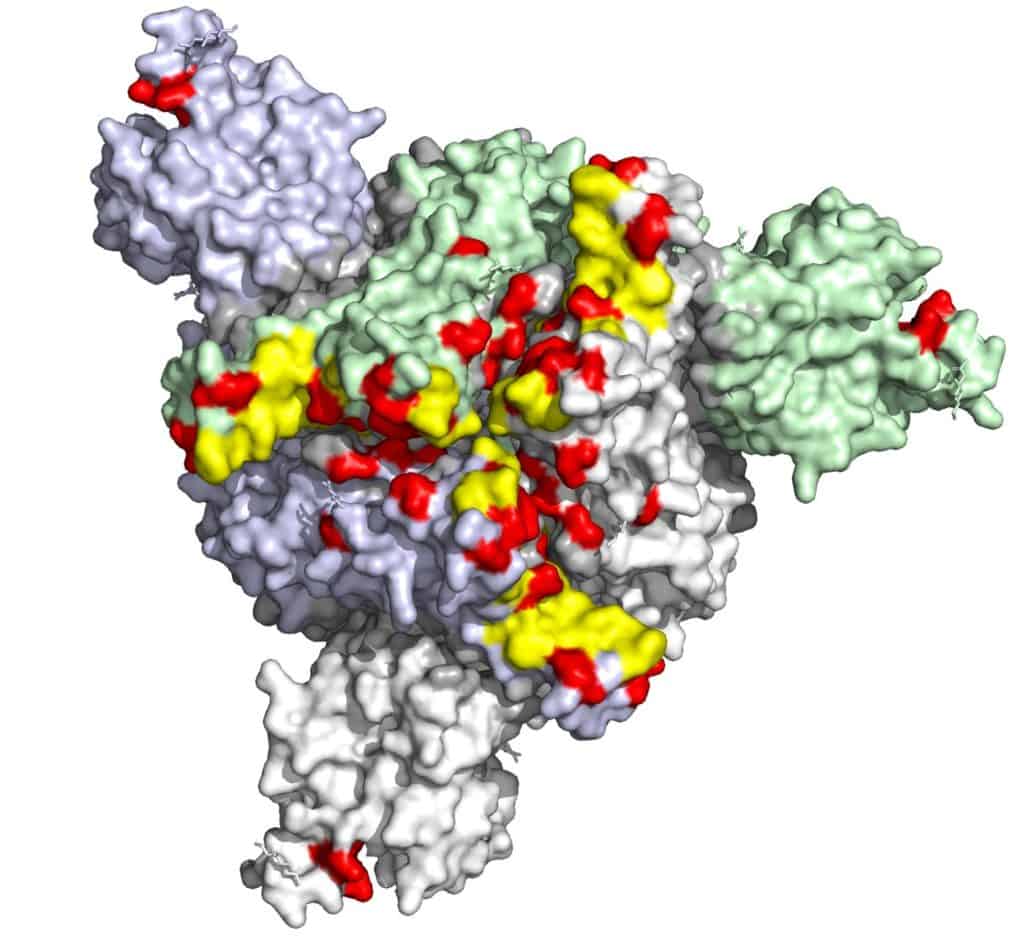The coronavirus has butted itself into our lives for the past two years throughout the COVID-19 pandemic. The globe originally suffered from the original SARS-CoV-2 strand, which mutated into the more fatal Delta variant. Now, a new Omicron variant incited global panic.
The Omicron variant was discovered in November 2021 in South Africa. It has since spread all over the world and renewed a sense of worry in public health experts. Specifically, officials are uncertain about how effective antibodies from the current mRNA vaccines are in reducing the risk of infection. So, what exactly are we dealing with?

What is the Omicron Variant?
It’s a new strand of coronavirus. As the Delta variant spread throughout the population, it mutated into a new genetic sequence. This Omicron version of the virus can create new spike proteins, which could have unexpected effects on the human body. Whether the effects of this coronavirus variant are milder or more severe is yet to be fully understood by scientists.
How Does Omicron Compare to Other Variants?
Preliminary findings suggest that Omicron is more contagious than previous strains, though how much more is unknown. Despite being more infectious, it could also present as a more mild disease, as South Africa reported fewer hospitalizations and deaths of people infected with Omicron compared to the Delta variant. Anecdotal reports indicate that people with the Omicron variant appear less sick compared to those with severe disease symptoms from previous waves.
Since these short-term studies used tiny sample sizes and haven’t been peer-reviewed, we can’t place too much confidence in their findings. Also, some countries like the United Kingdom had conflicting results, since they found no evidence that Omicron is less severe than Delta. Reports have been showing it is more resistant against monoclonal antibody treatments. If this is true and the variant of concern is highly contagious, hospital systems would not be able to handle the impending strain and will collapse under pressure.

Can the Booster Shot or Other Vaccines Help With Omicron?
Current vaccines that have been developed probably won’t offer full protection against Omicron. While the CDC, WHO, and other organizations hope that more effective shots like Pfizer and Moderna will still decrease the number of hospitalizations and deaths from the disease, based on initial findings, it’s possible that despite vaccination status, anyone could end up with breakthrough infections of the Omicron variant. Omicron appears to have extremely high transmission capabilities, and with it likely comes less immunity from vaccines and a greater risk of reinfection. Regardless, as of now, the COVID-19 shot is available for everyone above the age of 5, and the boosters have just been made available for all people older than 16.
Since vaccine makers didn’t plan to fight Omicron, they will likely modify current vaccines to incorporate new strands that counter Omicron and other pernicious variants. A flu shot must be administered once a year to maintain full protection. Based on initial data, Pfizer predicts an Omicron-based vaccine roughly by March 2022.
What If My Child is Immunocompromised?
According to public health officials at the CDC, immunocompromised children who are above the age of 12 can get a third primary shot 28 days after their second shot. The booster shot, however, has only just received emergency authorization use for 16-17-year-olds.
Can My Child Get the Vaccine at the Same Time as Other Vaccines?
The vaccine is not yet available for children under the age of 5. Extensive clinical testing hasn’t been done yet to determine if the vaccine provides substantial protection for young children. It may be that the risks of a vaccine outweigh the risks of the virus itself in a child’s body.
What Is the State of Omicron in the United States?
As of December 20, 2021, 48 states have encountered positive cases containing the new strand. On December 21, Omicron was estimated to contribute to about 73% of all American COVID-19 cases, with the Delta variant making up the other 27%. Omicron has already reached such an extent in three weeks, with the first case in America being recorded on December 1, 2021. As scientists predicted, Omicron will become the predominant strain of coronavirus for all future cases. For now, it’s best to continue with the highest standards of caution, which include masking, social distancing, and prophylaxis.
How is Omicron Being Tracked?
Scientists sequence strains of COVID-19 as a means of surveillance of new variants. For the original SARS-CoV-2 and Delta strains, there are three viral genes present in the RNA sequencing. The Omicron variation, however, is mutated such that the third spike gene can not be detected during testing. Therefore, if a strand does not indicate the presence of a spike protein, scientists can confidently identify it as the Omicron variant.
Not all positive cases of COVID are sequenced because it is expensive. Therefore, wealthier countries that have the capacity to sequence about 5% of cases will have comparatively skewed data because they’re doing a better job of tracking new variants.
What Political Implications Have We Seen from Omicron?
As the holiday season comes back to life, travel restrictions have been implemented to prevent future waves. On November 29, 2021, President Biden introduced an international travel ban from 6 countries in Southern Africa. Other travelers still require a negative COVID-19 test to board an airplane. Flight disruptions are, however, becoming more frequent.
Another COVID outbreak seems to be on the rise. Although the vaccine may lower the chances of entire industries shutting down like in 2020, many businesses are still rightfully concerned about the economy collapsing.
If you are feeling sick or having symptoms, call us at 210-886-8031.


If I began Ivermectin protocol once my symptoms began & Test was Positive, should I discontinue ivermectin since I am now without symptoms ( day 3)?
Hi Betty, thank you for reading our blog! Please consider scheduling a time to speak with our providers, who are licensed to give medical advice: 210-405-2486